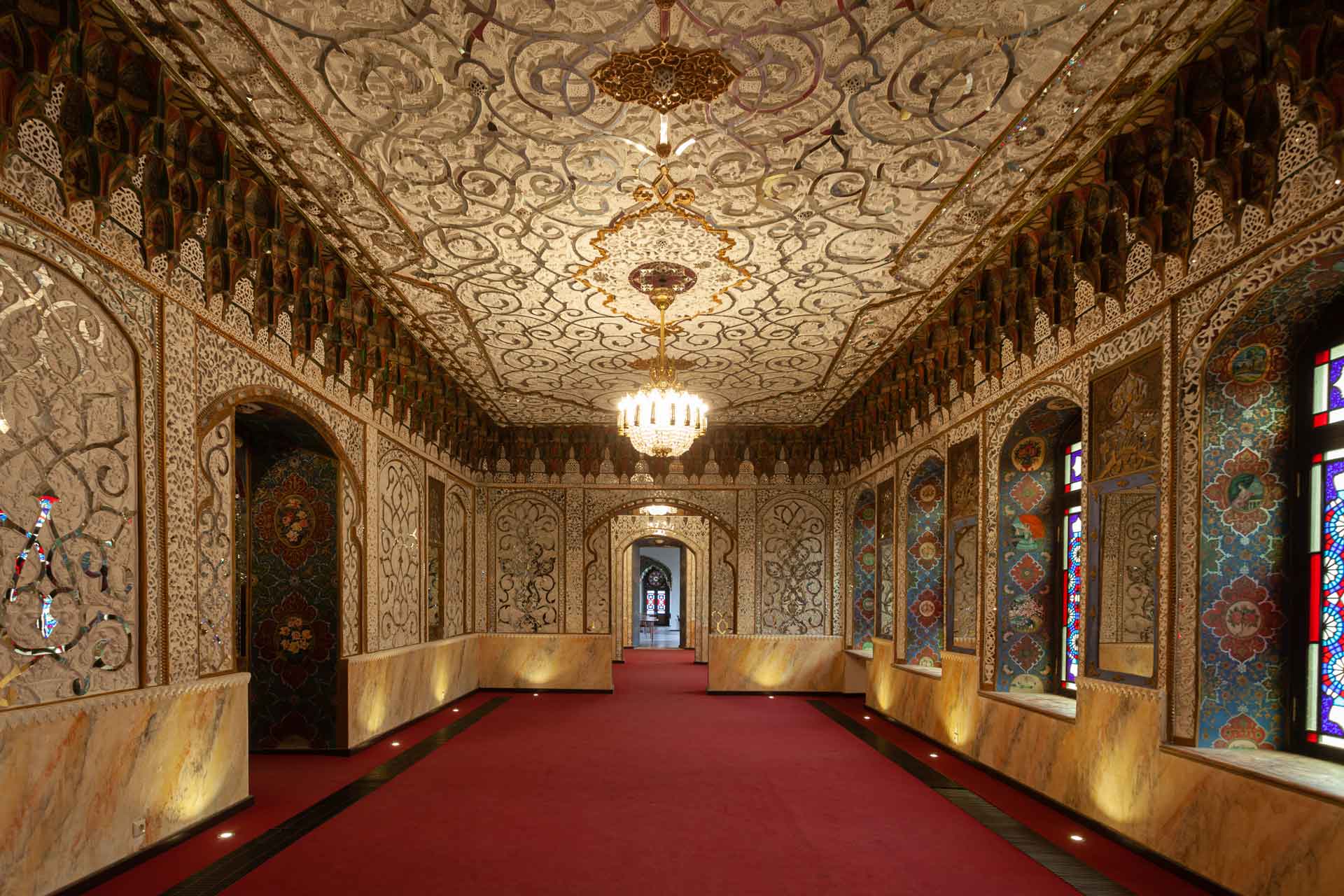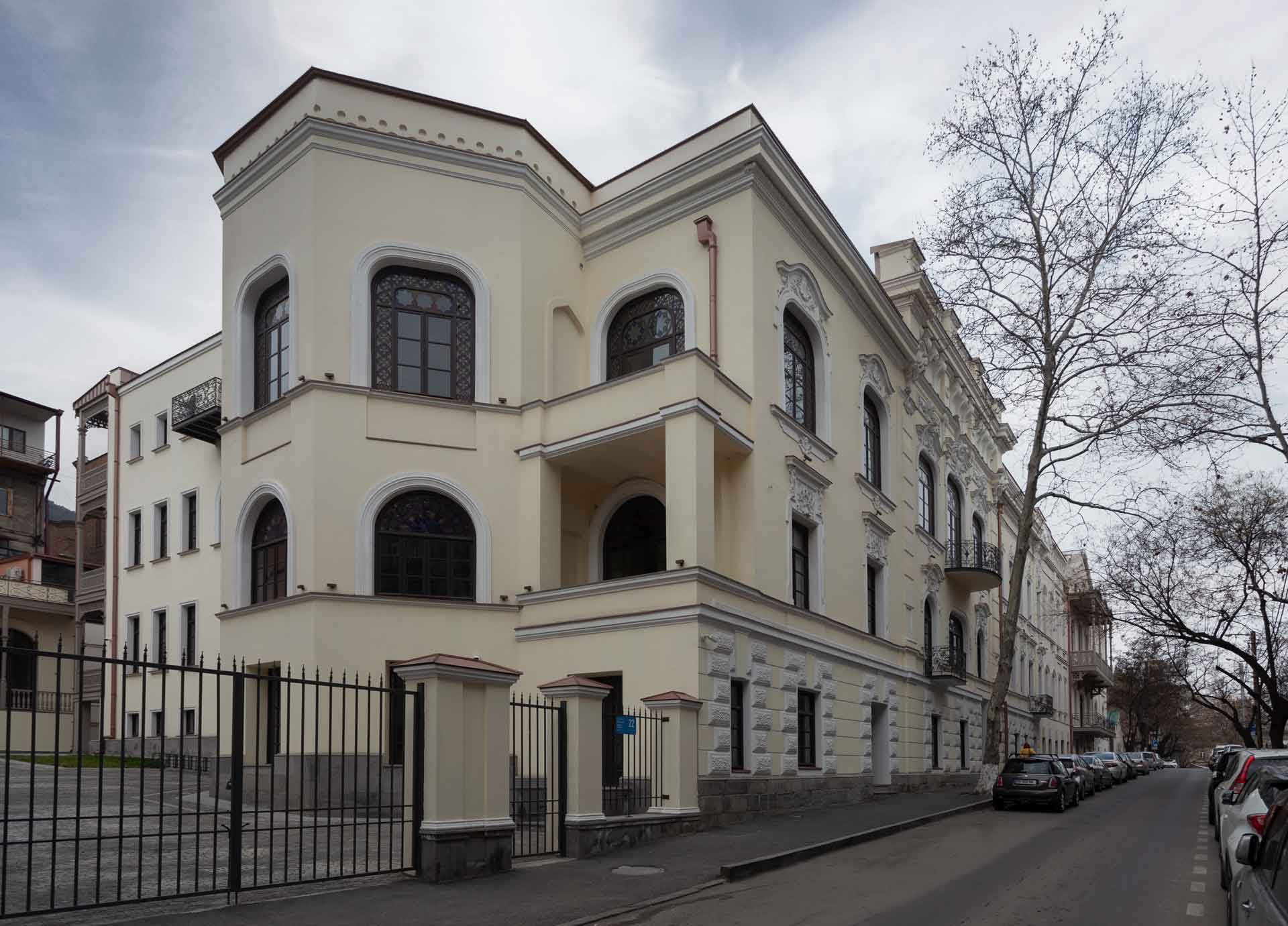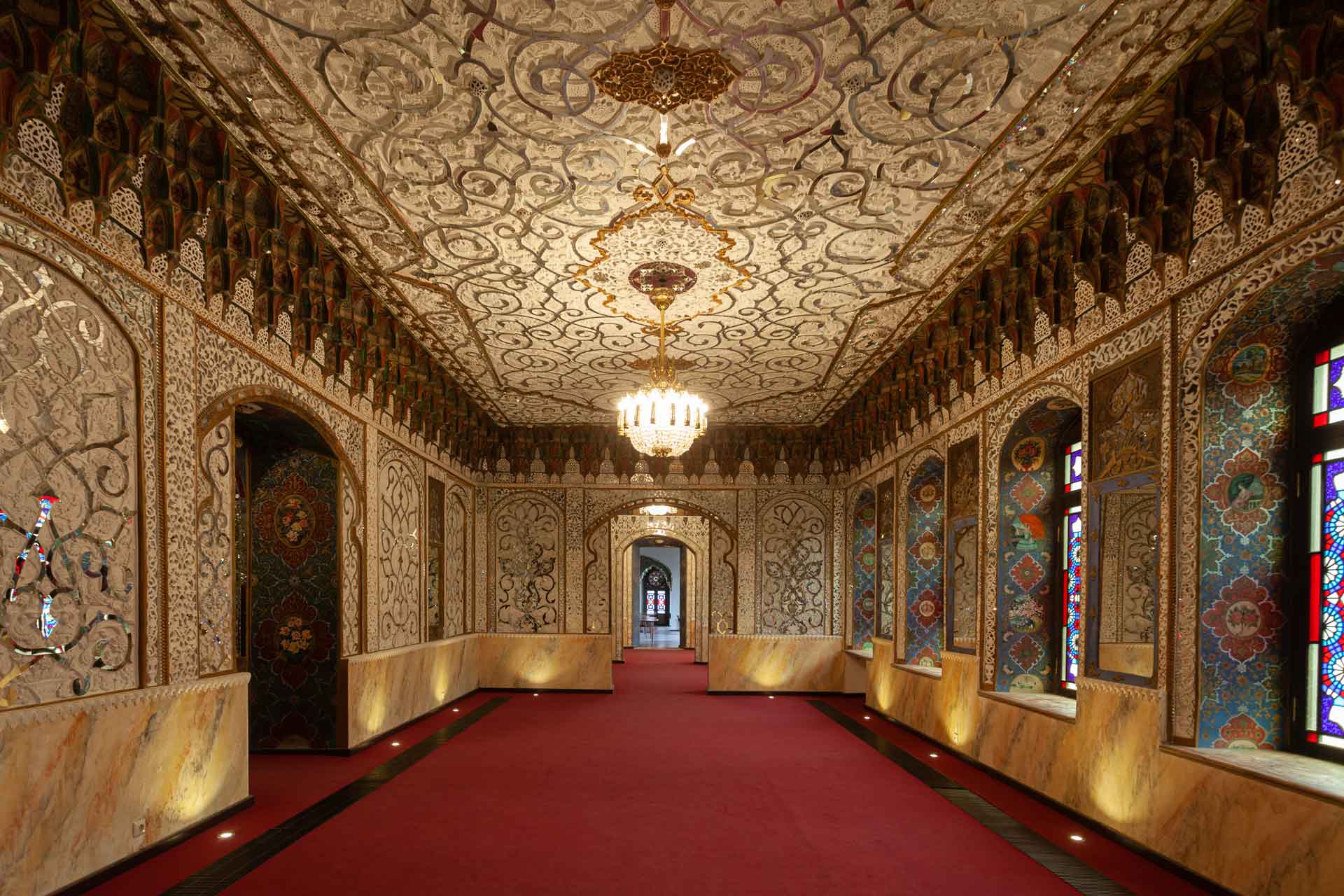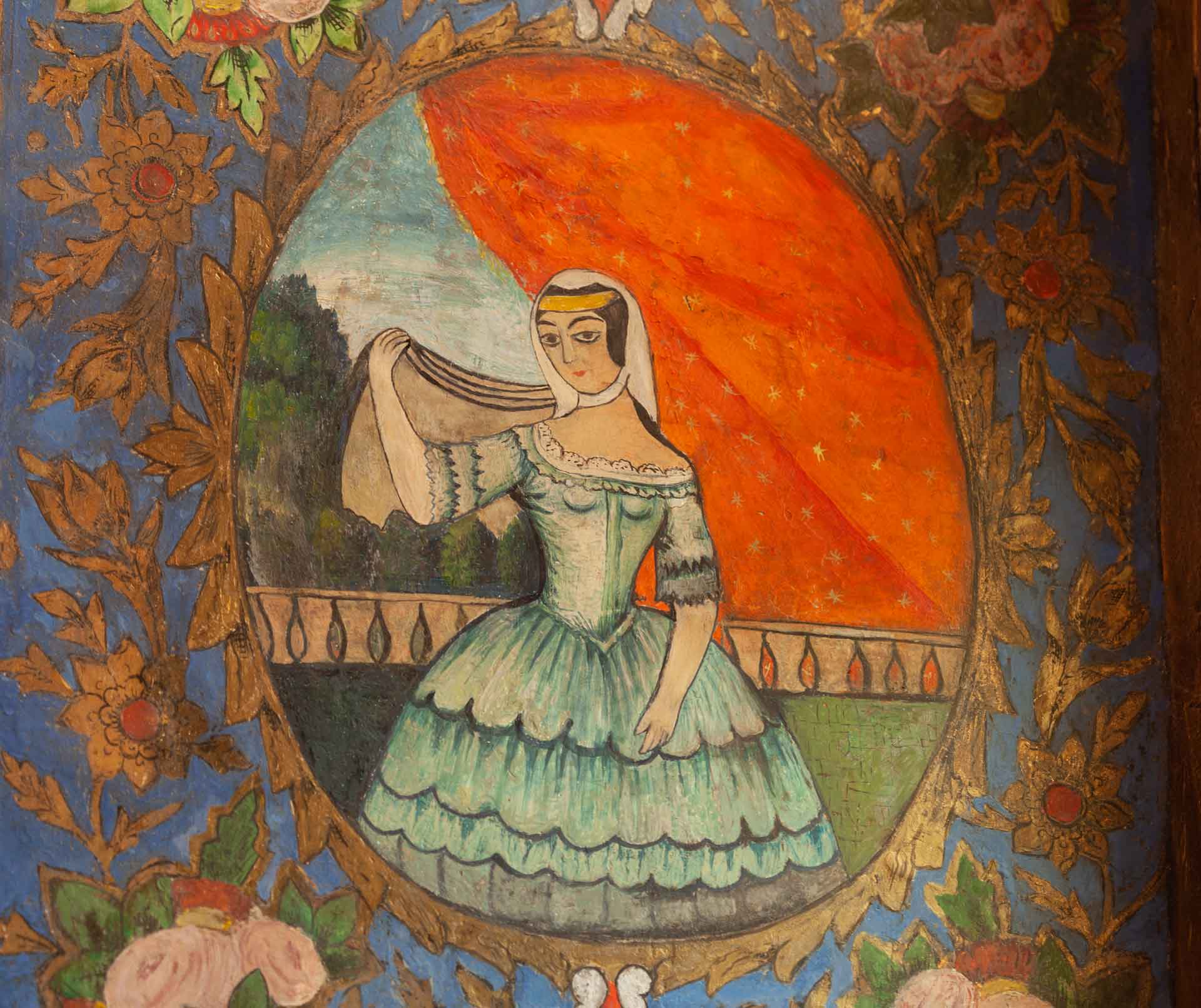
Feel free to add tags, names, dates or anything you are looking for


The history of the Tbilisi State Academy of Arts is linked to one of the most unique and significant buildings in the capital of Georgia. The story of the building, which was first constructed as a palace and soon after transformed into a cultural center and higher education institute, has a particular significance of its own. It has already functioned as one of the major hubs of arts education in Georgia and the Caucasian region for more than 100 years. The building itself is about 160 years old, and construction of its main section was completed in 1861.
.jpg)
Building of Academy of Arts in the early twentieth century. TSAA Archive
The Academy of Arts is located in the heart of Tbilisi, on a street parallel to Rustaveli Avenue that in 1879 was named after the Russian writer and diplomat Alexander Griboyedov.
During the first half of the 19th century, this district was home to many representatives of Georgian nobility. Being located in one of the most beautiful quarters of the capital, the current Griboyedov street counted among the more elite places of residence. In the middle of the 19th century Vardan Arshakuni – a rich merchant, honorary citizen of Tbilisi, and between 1858 and 1860 mayor of the city – selected this location for the construction of his palace. This was the time when Arshakuni’s palace and its church were built based on city architect Grigory Ivanov’s project.
.jpg)
Building of Academy of Arts in the early twentieth century. TSAA Archive
.jpg)
Building of Academy of Arts in the early twentieth century. TSAA Archive
Arshakuni wanted to construct a building that would resemble the Persian palaces, and for decoration of the interior and the façade invited the best masters from Iran and Europe. Unfortunately, Arshakuni himself died in 1862, before the building was completed.
.jpg)
Building of Academy of Arts in the early twentieth century. TSAA Archive
.jpg)
Building of Academy of Arts in the early twentieth century. TSAA Archive
In 1869-86 the palace became home to the so-called Tiflis Circle – a club which united the public servants of the Russian Empire. The building hosted balls, family evenings, dance parties and performances. Different rooms were used as a library, a guest room, a dining room, a billiard hall, a ballroom, and various performance spaces. By the end of the 19th century, the largest section of the palace was owned by Princess Nino Kobulashvili, who commissioned Georgian architect Simon Kldiashvili to reconstruct it.

Tbilisi State Academy of Arts. 2021
In 1902, Kldiashvili developed a project of partial rehabilitation, which took into consideration the original design and preserved the main structure and shapes of the façade’s open spaces intact. However, the building still became subject to certain alterations that were made not only to the front but to the interior as well. Some elements of the then very popular Art Nouveau style were added. As a result of this reconstruction, the building was enriched with elements of Classicism, Islam and Baroque, and gained its current appearance.

Tbilisi State Academy of Arts. 2021

During its difficult and interesting biography, the building has undergone numerous changes. Today, A. Griboyedov Street still houses a lengthy façade decorated with sculpted garlands, shells, masks and human faces.

Interior. Tbilisi State Academy of Arts. 2021

One also needs to mention here the balconies of the Academy of Arts, though the most impressive and valuable sections of the former palace are to be found in its interior and the amazing halls that surprise visitors with their Iranian style and feature stucco ornaments, wall paintings with motifs of oriental miniatures, as well as Islamic-style windows (Mashrabeyas). According to art historians and analysis of the technique of the decorations, they must have been produced by Iranian masters.


In 1901, the renewed part of the building was handed over to an art school and afterwards to a newly-launched school of the Caucasus Society for the Encouragement of Fine Arts – a powerful and influential union, which united under its umbrella the associations of Tbilisi artists and local musicians (both established in the 1970s). At the turn of the century, the membership of the union comprised Georgian artists as well as others from different ethnic backgrounds. Naturally and logically, the Georgian Academy of Arts (the initial title of the Academy of Arts) was established on the premises of the Caucasus Society for the Encouragement of Fine Arts and the art school before the tenure of the entire building was transferred to the Academy.
.jpg)
At this time the multifunctional art space was administered by artists from multiethnic backgrounds. It is noteworthy that starting from 1909, before the official establishment of the Academy, the building also hosted the Higher Courses of Tbilisi Women - a private school initiated by a women’s group. One of the halls was occupied by renowned artist and professor of the Academy Gigo Gabashvili, who used it as a workshop for many years and where he even organized his personal exhibitions. During 1922-1937 another founder of the Academy of Arts, the Polish painter Henryk Hryniewski lived in the same building, and in 1916 his wife Maria Perini opened a very popular ballet studio here.
At the beginning of the 20th century, there were several art schools operating in Tbilisi and other cities of Georgia. At the end of 1921 they were replaced by workshops of higher art, since Georgian society deemed it very important to establish a higher education institution in the field of arts. Dimitri Shevardnadze, the artist and public figure who returned to Tbilisi from Munich in 1916 and established the Society of Georgian Artists, contributed significantly to turning this idea into reality.
.jpg)
The Academy of Arts opened its doors in spring of 1922 as the first higher education institution in the entire Caucasus region, and one of only three academies in the Soviet Union. The Tbilisi Academy of Arts was managed by an eminent international council of professors: G. Gabashvili, I. Nikoladze, E. Lanceray, M. Toidze, J. Charlemagne, E. Tatevossian, H. Hryniewski, A. Kalgin, N. Severov, G. Chubinashvili – the famous art historian, who was elected as first rector of the Academy. Over the following years the teaching team of the Academy was joined by modernist artists David Kakabadze and Lado Gudiashvili, who had returned from France. Theoretical disciplines were taught by the famous scientists Dimitri Uznadze, Vakhtang Kotetishvili, Shalva Nutsubidze among others.

The fate of the Tbilisi State Academy of Arts housed in the former palace and the fate of the people who worked there were closely intertwined with the political and public events of the following years. Although the first 60 years of the building’s existence were connected with individuals and specific establishments, for almost 100 years since 1922 the history of the building has become affiliated with the Academy of Arts and the opening of a new chapter.

Even the short story above suffices to demonstrate the importance of this historic building for Tbilisi, Georgia, and the entire region in terms of its artistic value and role as witness of an incredible era.